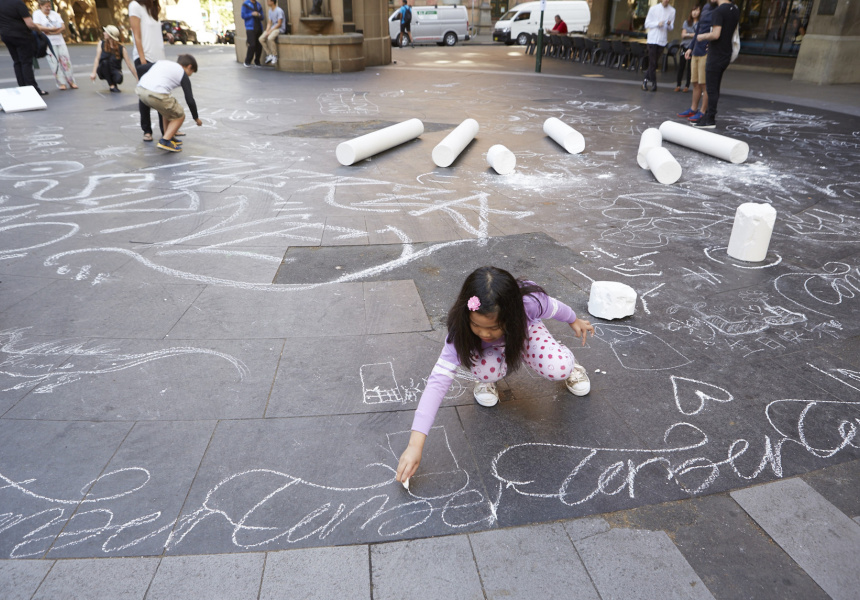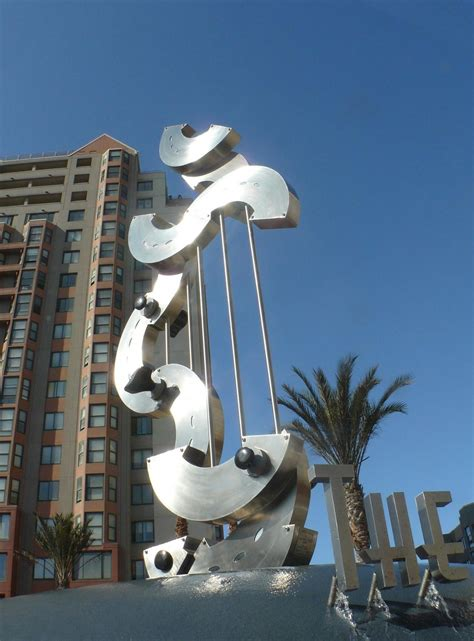Public Sphere
Anumita Mukherjee Allora & Calzadilla, Chalk, 1998/2019
Allora & Calzadilla, Chalk, 1998/2019
The public sphere generally refers to a social space or an area in social life where different opinions are freely expressed, problems are discussed, and solutions are collectively developed.[1]
Such discourses often influence political action. In recent times, the public sphere has expanded to include online media and the digital space.
 John Atkin, Hard Bop, Fillmore Plaza, 2008
John Atkin, Hard Bop, Fillmore Plaza, 2008The purpose or function of the public sphere is to “bring together work which defines and challenges the borders of the concept and to document its broad and varied use” [2].
The English term popularised by Jurgen Habermas in his study ‘The Structural Transformation of the Public Sphere’ is a translation of the German ‘Öffentlichkeit’ which refers to speakers and listeners in the public sphere as well as the state of being publicly visible and subject to public scrutiny.[3]
In his study, Habermas set four conditions for a space to be called a public sphere. These are as follows:[4]
"· The formation of public opinion· All citizens have access.· Conference in unrestricted fashion (based on the freedom of assembly, the freedom of association, the freedom to expression and publication of opinions) about matters of general interest, which implies freedom from economic and political control.· Debate over the general rules governing relations."
In the context of art in the public sphere, or public art, ‘public’ refers to more than just moving art outside a gallery. It requires more interaction between the artists and the rest of the members of the public (including the audience and specific communities that may be part of the artwork). Art in the public sphere can help us better understand and communicate thoughts on social, cultural, or political issues and ideas.[5]
An example of art in the public sphere is Jennifer Allora and Guillermo Calzadilla’s artwork titled ‘Chalk’. In cities around the world, the public was given human-sized chalk pieces to write down and exchange ideas in a physical space. According to our definition, this space can be defined as a (or part of the) public sphere.[6]
Other artists who have created similar platforms for public conversations include Tania Brugera and John Atkin.
[7]
[8]
[9]
![]() Tania Brugera, Talking to Power, 2017
Tania Brugera, Talking to Power, 2017
An example of art in the public sphere is Jennifer Allora and Guillermo Calzadilla’s artwork titled ‘Chalk’. In cities around the world, the public was given human-sized chalk pieces to write down and exchange ideas in a physical space. According to our definition, this space can be defined as a (or part of the) public sphere.[6]
Other artists who have created similar platforms for public conversations include Tania Brugera and John Atkin.
[7]
[8]
[9]
 Tania Brugera, Talking to Power, 2017
Tania Brugera, Talking to Power, 2017